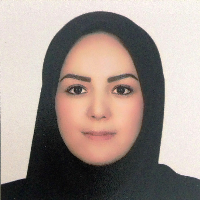Examining the talent development environment of Iran’s blind football: the players’ perceptions
An essential factor for developing talents in Para-sports is having an optimal environment. To provide such an environment, attaining a thorough understanding of the environment in which the elite athletes have been nurtured is essential. Therefore, the purpose was examining the talent development environment of Iran’s blind football from the perspective of the players.
This study was a descriptive-survey study with practical results. The statistical sample composed of 12 B1 players invited to the camps of Iran’s national blind football team. The talent development environment questionnaire (Persian version) was used for collecting data. Friedman test was used to prioritize the factors of the questionnaire. Statistical analysis was done using SPSS, 23.
The results showed that there was a significant difference between the factors of talent development environment in blind football (Chi-square = 48.122, d.f = 5, P=0.001). According to the results, the "Communication” factor (5.79) was ranked at first, followed respectively by “Long-Term Development Focus” (4.79), “Quality Preparation” (3.38), “Challenging and Supportive Environment” (2.79), “Long-Term Development Fundamental” (2.21), and “Support Network” (2.04).
In general, the factors of the talent development environment in Iran's blind football were perceived by the players to be at average and good levels. However, some of the items were perceived by the players to be below the average, which are needed to be improved in order to increase the quality of the talent development environment in blind football in Iran. Key words: 5-a-side Football, Footballer, Paralympic Games, Talent Identification.
-
A Comparative Study of Physical Fitness Characteristics Between Male and Female Goalball Players
*, Somayeh Mozafari
Journal of Humanistic Approach to Sport and Exercise Studies, Spring 2024 -
The Effect of Game-based Intervention on Postural Control and Motor Per-formance in Children with Intellectual Impairment
Ebrahim Ebrahimi, *, Negin Sadat Tabatabaei, Somayeh Mozafari
Journal of Humanistic Approach to Sport and Exercise Studies, Winter 2024



